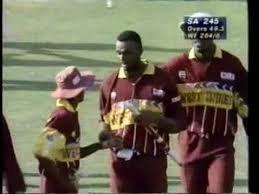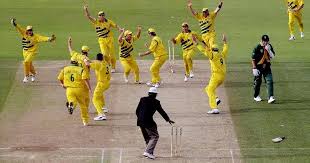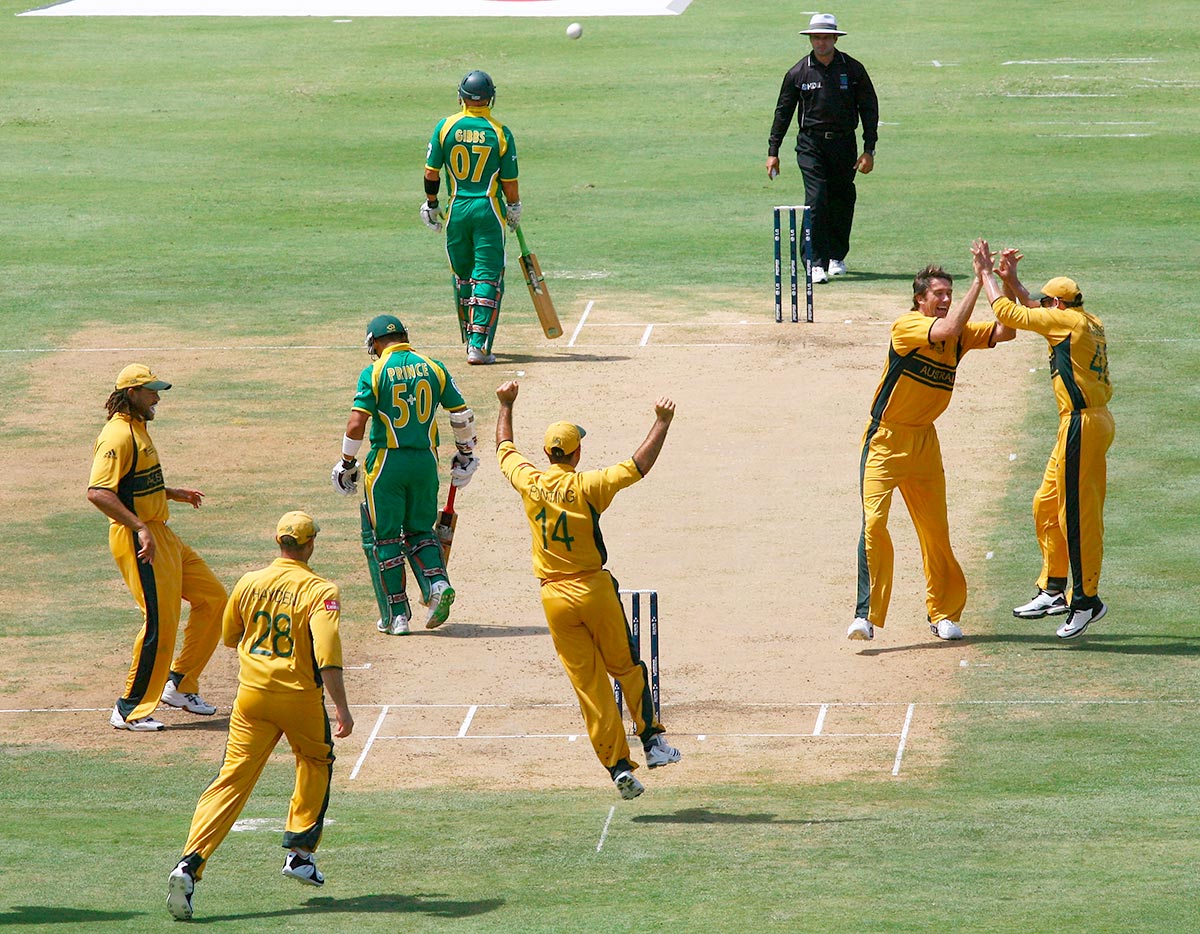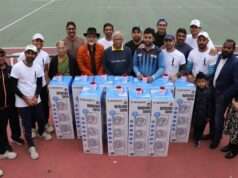Today, as India waits for its five-year fate, Aravind Mahadevan keeps us updated through another countdown – to the ICC Cricket World Cup!
The cricket expert looks into South Africa’s underwhelming performances and its inability to reach the finals each time. Will the jinx continue?
“Since their return to the international cricket scene in 1991, South Africa have always been of the stronger teams around and a force to compete with in both tests and one-day internationals. For long periods of time, they have been the team which has been closest to Australia in terms of overall results. But when it comes to the world cup, South Africa has underperformed and its results have been way below the team’s potential. In fact, South Africa remains the only major cricket playing nation not to have reached a world cup final, a staggering fact in itself given the team’s overall one-day international record and performance in bilateral competitions. This article looks back at what went wrong for South Africa in their world cup campaigns till date.”

1992: The Duckworth Lewis Fiasco
Only a few months since their re-admission back to the international cricket stage after 21 years of sporting isolation, South Africa played their first world cup. South Africa surprised many with a victory over pre-tournament favourites Australia in the group stage. They also defeated the Asian superpowers India and Pakistan. The Jonty Rhodes run out of Inzamam Ul Haq in the Pakistan versus South Africa was one of the most published photographs in newspapers and magazines at that time, showing an acrobatic Jonty flying through the air. South Africa finished just behind New Zealand and England at the end of the round-robin stage to make the semi-finals. The semi-final against England will be one that will evoke bitter-sweet memories for South Africans – joy at reaching the last four stage of cricket’s most important event in their first appearance and bitterness at the manner of their exit. Chasing a target of 253 in 45 overs, South Africa reached 231/6 off 42.5 overs and required another 22 runs of 13 balls when it started to rain at the Sydney Cricket ground. With Brian Macmillan, who would subsequently become one of the world’s leading all-rounders, still at the crease, you would have to think that South Africa had a fair chance of making it.

After a short while, when the rain had abated, the vagaries of the Duckworth Lewis rule that was designed to cope with rain interruptions meant that the target was changed to 22 runs off just 1 ball, leaving South Africa helpless. South Africa won the hearts of millions that day as they had played great cricket during the tournament and did not deserve to go out in that fashion. In retrospect, had rain not intervened, maybe this was South Africa’s best chance till date to lift the world cup, given that they did not have the weight of expectations hanging over them as was to be the case in subsequent campaigns.

1996: Lara’s knock-out punch
South Africa was one of the pre-tournament favourities, with a strong record in one-day internationals leading into the world cup. They were the most dominant team in the group stage, winning all five games with ease, including against India. In the quarter-finals, they came up against West Indies who had a very shaky entrance into the knock-out stage, having lost to Kenya in one of the group matches. Inexplicably, South Africa omitted Alan Donald from their bowling attack in place of spinner Paul Adams on what turned out to be seamer-friendly Karachi wicket. Batting first, West Indies looked on course for a total close to 300 on the back of a magnificent 111 off just 94 balls by Brian Lara. But the South African bowlers did well towards the end of the innings to restrict West Indies to a very achievable 264. South Africa started well in their chase and things looked good for them at 140/2. But starting with the dismissal of the well set Darryl Cullinan, they lost wickets at regular intervals to be bowled out for 245.

1999: South Africa choke at the death
It was after this tournament that the ‘chokers’ tag got attached to South Africa. As usual, South Africa was impressive in the initial group stage and despite an unexpected defeat against Zimbabwe, finished top of their group. They then went on to beat Pakistan and New Zealand in the Super Sixes stage to assure themselves of a semi-final berth. The drama started in the last Super Six game against Australia at Headingley. For Australia, it was a crucial game as they needed to win to make the semis. Herschelle Gibbs scored a fine hundred as South Africa scored a formidable 271 after batting first. Australia were in deep trouble at 48/3 when Ricky Ponting and Steve Waugh came together to restore the innings. It was after Steve had crossed his half-century that he offered a simple catch to Herschelle Gibbs which was put down. Steve Waugh then uttered the following famous words to Gibbs “you have just dropped the World Cup mate”. Waugh went on to score a masterly unbeaten 120 as Australia scampered home with two balls to spare. Not only was it a psychological blow for the South Africans who would have to confront Australia again in the semi-final but it also meant that in the unlikely event of the semi-final ending in a tie, Australia would go through to the final by virtue of having defeated South Africa in the Super Sixes. This latter point would prove to be fateful for South Africa. In the semi-final at Edgabaston. Australia were again in trouble at 68/4 before Steve Waugh and Michael Bevan dug in with half-centuries to take Australia to 213, a total that just give their bowlers something to play with. After a solid start by their openers, Shane Warne began weaving his magic as South Africa lost quick wickets to dive to 61/4. Jacques Kallis and Jonty Rhodes put together a partnership to move South Africa to 145 with 10 overs remaining. But with a world cup final spot on the line, the South African lower order crumbled against the relentless pressure applied by Australia. At 198/9, with only eight balls remaining and 15 still required, it looked curtains for South Africa. But their best batsmen of the tournament Lance Klusener was still at the crease and some bludgeoning shots from him took South Africa to just one run shy of victory with 4 balls remaining and Klusener still on strike. Non-striker Alan Donald’s nerves were at breaking point and it showed on the next ball when Donald backed up too far and Darren Lehman’s throw missed the stumps by a whisker. On the next delivery. Klusener was only able to push the ball down the ground and he set off for a suicidal single as Donald remained rooted to his crease. Klusener has already run past Donald when the Australians gleefully uprooted the stumps. There was absolutely no need for this with two balls still remaining. And incredibly the match had ended in a tie and South Africa was eliminated, the defeat at Headingley costing dear.

2003: An expensive “miscalculation”
The weight of home expectations must have been a big factor that affected South Africa’s performance in the 2003 world cup. In their first game against West Indies, they went down narrowly by 3 runs, with Brian Lara again proving to be their nemesis with a fine 116. Chasing a target of 278, South Africa were down and out at 160/6 but Boucher and Klusener resurrected the innings and took South Africa to within just a few runs of the target when Klusener departed and with him South Africa’s chances. After an easy win against Kenya, South Africa lost again, this time to a New Zealand in a rain-interrupted game. The original target of 306 was reduced to 229 off 39 overs on account of the rain break, which definitely worked in New Zealand’s favour. New Zealand cantered home with 9 wickets to spare, with their skipper Stephen Fleming leading the way with an unbeaten 134. Victories against Bangladesh and Canada set the scene for the crunch final game against Sri Lanka, a do or die game for South Africa to stay in the tournament. And again Duckworth Lewis had a big outcome on the bearing of the game. Sri Lanka batted first and posted 268, with Marvan Atapattu scoring 124. After being reduced to 149/5, Mark Boucher and skipper Shaun Pollock added 63 to take South Africa to 212 before Pollock was dismissed. Boucher and Lance Klusener then took South Africa to 229/6 before persistent rain forced the players off the field. Duckworth Lewis calculations then showed that if the match were not to resume, it would end in a tie. Boucher had struck Muralitharan for six to reach 45 not out and he then failed to score from the last ball of the 45th over, which became the final delivery of the match. Apparently, he was under the impression that 229 was enough to win the game as that was the communication from the dressing room and hence he cautiously defended the last ball of the over to make sure that a wicket did not fall. If he had just scored a single, South Africa would have been through to the Super Sixes. Thus South Africa was eliminated in unimaginable circumstances in the initial phase itself and till date this has been their worst performance in a world cup tournament.

2007: The old nemesis Australia again
South Africa met their arch rival Australia in the semi-final at St Lucia. Australia’s tournament bad been flawless so far as they had scored dominating wins in all their games, including a crushing 83-run win against South Africa in their initial group encounter. For South Africa, aside from the earlier defeat to Australia, they had also suffered an embarrassing slip against Bangladesh in the Super Eights stage. After winning the toss and opting to bat, the South African top-order batting clearly had an attack of nerves and crumbled against Glen McGrath and Shaun Tait. At 27/5 after 10 overs, the game was practically over. Though Herschelle Gibbs and Justin Kemp offered some resistance, South Africa was bowled out for 149. The result of the game was never in doubt as Australia cruised home with 7 wickets and 19 overs to spare. A clinical performance by Australia as South Africa plunged to another defeat in a world cup knock-out game.

2011: Yet another choke in a knock-out game
Sticking to the pattern seen in the earlier world cups, South Africa was dominant in the group stages, with their only defeat coming against England in a low-scoring game where South Africa were unable to chase down a modest total of 171. The highlight for South Africa in the group phase was their successful chase of 296 against eventual tournament winners India. South Africa went on to top their group and met the fourth placed team in the other group, New Zealand in the quarter final at Mirpur. New Zealand had shown indifferent form so far and South Africa was a huge favourite. Bowling first, all went as per script for South Africa as they contained New Zealand to a barely competitive 221, which was far lower than what it looked like New Zealand would get when they were 153/3 with 12 overs still remaining. Despite the early dismissal of Hashim Amla, South Africa reached a very comfortable 108/2 off 24 overs and no one could have envisaged what would follow. First, Jacob Oram pulled off a magnificent catch near the boundary to get rid of Kallis. Shortly thereafter, JP Duminy was bowled off Nathan McCullum, attempting a cross-batted slog when there was no real need. The nerves were now jangling in the South African dressing room and New Zealand was like a tiger hunting its prey. Another key moment in the game happened when AB de Villiers was dismissed attempting a suicidal run. Plagued by the demons of self-doubt, South Africa went on to lose their last 8 wickets for 64 runs and were bowled out for 172. Another golden opportunity to grab a share of World Cup glory had gone by for South Africa.

2015: New Zealand break South African hearts again
In the group stages, South Africa suffered two reverses, first a thumping 130-run defeat against India and then a 20-run defeat in a rain-affected game against Pakistan. Despite this, South Africa finished second in their group and qualified to play Sri Lanka in the quarter-finals. Their performance against Sri Lanka raised the hopes of South African fans that this world cup would be different. After skittling Sri Lanka for 134, South Africa raced to their target off just 18 overs with 9 wickets to spare, the most comprehensive of victories possible. Amazingly, this was South Africa’s first win a world cup knock-out game after four earlier defeats and a tie. The semi-final against New Zealand at Eden Park started promisingly for South Africa. In a match reduced by rain to 43 overs, fine knocks by Faf Du Plessis and AB de Villiers took South Africa to 281/5. Chasing an adjusted target of 298, New Zealand got off to an absolute flyer on the back of a swashbuckling half century by skipper Brendon McCullum, as the first 6 overs produced 71 runs. However, some quick wickets saw New Zealand slump to 149/4 off 21 overs and South Africa now had the upper hand. Grant Elliot and Corey Anderson put together a wonderful century partnership to lift New Zealand past 250 and Grant Elliot remained till the end. With five runs needed off two balls, Dale Steyn, one of the world’s leading fast bowlers succumbed to nerves of the occasion and produced a full toss which was dispatched out of the stadium by Elliot, to the despair of South Africa and to the delight of a delirious home crowd
2019: What is in store for South Africa?
What are South Africa’s chances in this world cup? On paper, they are not as a strong a team as they have been in some of the past world cups. Their results over the last couple of years have shown that they are no longer as dominant as they were. On the flip side, the expectations from this side are not as high as in previous world cups and this will benefit South Africa greatly. A lot of the team members are relatively inexperienced and they don’t carry the historical baggage and scars of previous failures at World Cup tournaments, which will help the team play much more freely. But they will encounter stiff competition from teams like England, India and Australia. All in all, though one cannot discount South Africa, it is hard to see them go all the way.
Here’s the schedule:
https://www.cricbuzz.com/cricket-series/2697/icc-cricket-world-cup-2019/matches





